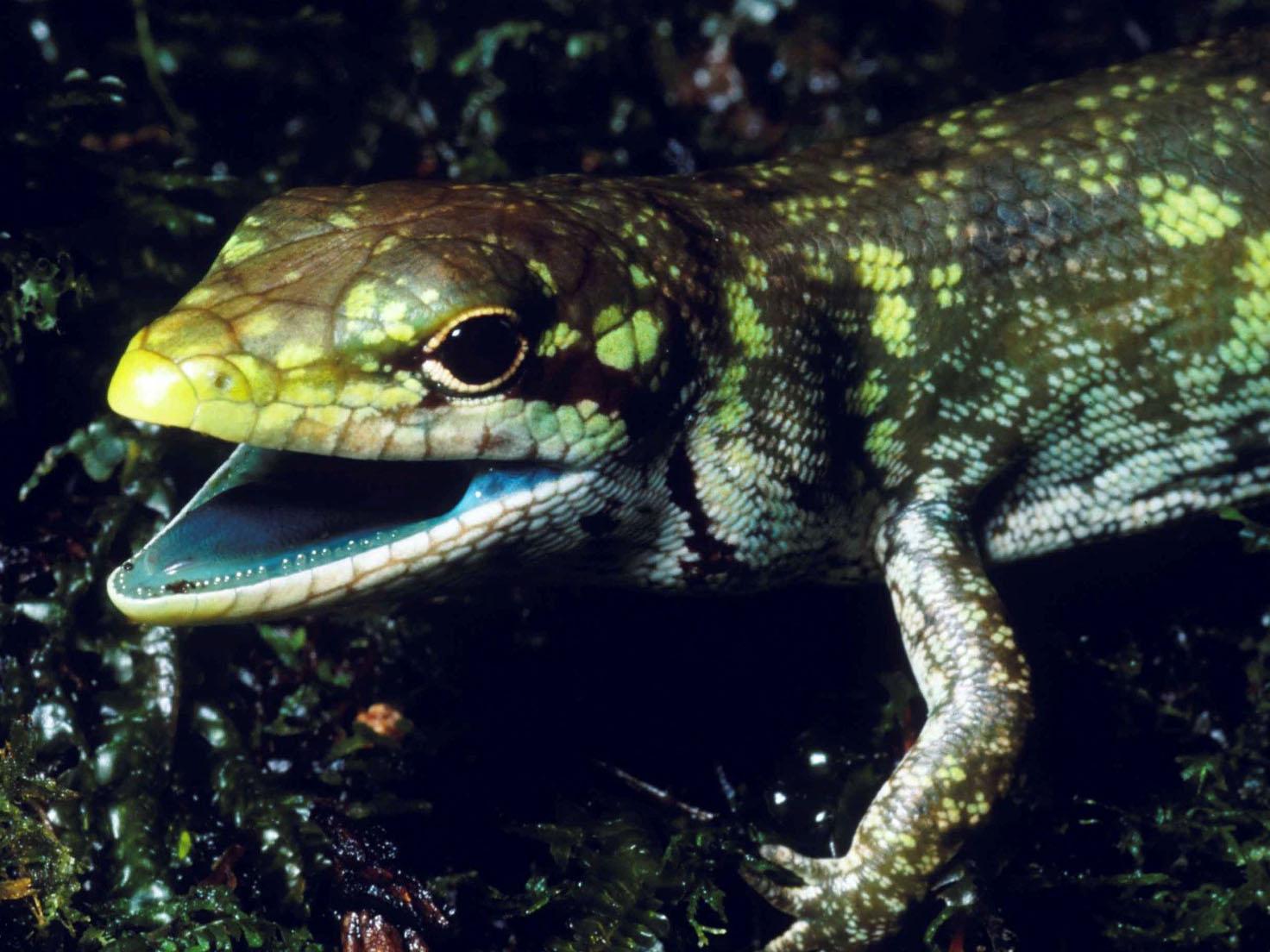Lizards with toxic green blood may have evolved it to fight disease
Reptiles have bile pigment in blood at levels 40 times higher than lethal concentration in humans

Your support helps us to tell the story
From reproductive rights to climate change to Big Tech, The Independent is on the ground when the story is developing. Whether it's investigating the financials of Elon Musk's pro-Trump PAC or producing our latest documentary, 'The A Word', which shines a light on the American women fighting for reproductive rights, we know how important it is to parse out the facts from the messaging.
At such a critical moment in US history, we need reporters on the ground. Your donation allows us to keep sending journalists to speak to both sides of the story.
The Independent is trusted by Americans across the entire political spectrum. And unlike many other quality news outlets, we choose not to lock Americans out of our reporting and analysis with paywalls. We believe quality journalism should be available to everyone, paid for by those who can afford it.
Your support makes all the difference.Coursing through the veins of some New Guinean lizards, is blood so toxic it would kill a human 40 times over.
Besides being deadly, what makes it even more striking is its colour. It is such a bright shade of lime green it makes the reptiles’ muscles, bones and tongues green as well.
This colour comes from high levels of biliverdin – a green bile pigment produced as a waste product that causes jaundice in humans.
Not only are these reptile perfectly healthy, scientists think the prevalence of green blood among New Guinean skinks means counterintuitively this toxic blood is likely providing them with some kind of health benefits.
"In addition to having the highest concentration of biliverdin recorded for any animal, these lizards have somehow evolved a resistance to bile pigment toxicity,” said graduate student Zachary Rodriguez, who was the lead author of a paper exploring the origins of this unusual blood.
Professor Chris Austin of Louisiana State University, in whose lab Mr Rodriguez is based, has led multiple expeditions into the depths of the New Guinean rainforest to monitor the astounding diversity of reptiles and amphibians found there.
The scientists have focused particularly on the green-blooded skinks, which are found nowhere else in the world barring the neighbouring Solomon Islands.
On their expeditions they gathered DNA samples from 52 species of skinks, including six species with green blood. Two of these green-blooded species were previously completely unknown to science.
Using this genetic information they were able to build a skink family tree, indicating there are at least four different lineages of green-blooded lizards, each of which evolved independently from red-blooded ancestors.
"We were excited by the complex history of these animals and surprised by the breadth of green-blooded lineages across lizards," said Mr Rodriguez.
The fact that this characteristic appears to have popped up repeatedly suggested that green blood is not merely some evolutionary quirk, but a useful characteristic favoured by natural selection, he added.
High levels of bilverdin have been recorded in the blood of several species of fish and insects, and have been suggested as the cause of green bones, skin, and blood in some frog species.
This reinforces the idea that green blood has some adaptive value, and lab studies have suggested the bile pigments may have a role as antioxidants or even protecting against disease.
"Our next goal is to identify the genes responsible for green blood," said Mr Rodriguez, who published his findings in the journal Science Advances.
Finding what protects the lizards against the harmful effects of excessive green pigment may also provide insights into jaundice – a condition in humans that causes yellowing of the skin and eyes, as well as liver malfunction.
“Understanding the underlying physiological changes that have allowed these lizards to remain jaundice-free may translate to non-traditional approaches to specific health problems," said Mr Rodriguez.
"The green-blooded skinks of New Guinea are fascinating to me as a parasitologist because a similar liver product, bilirubin, is known to be toxic to human malaria parasites,” said Professor Susan Perkins of the American Museum of Natural History, one of the study’s co-authors.
“Ongoing work with the Austin lab examines the potential effect of the green blood pigment on malaria and other parasites that infect these lizards."
Join our commenting forum
Join thought-provoking conversations, follow other Independent readers and see their replies
Comments